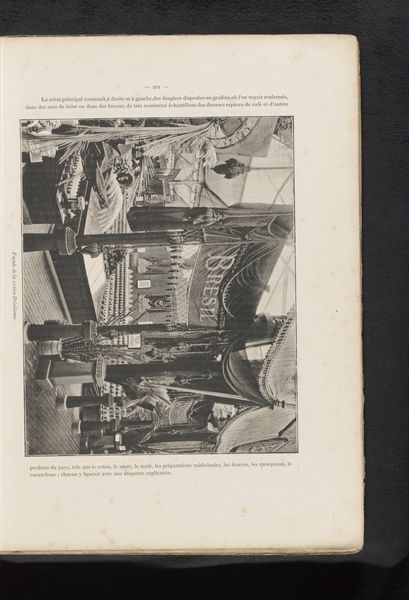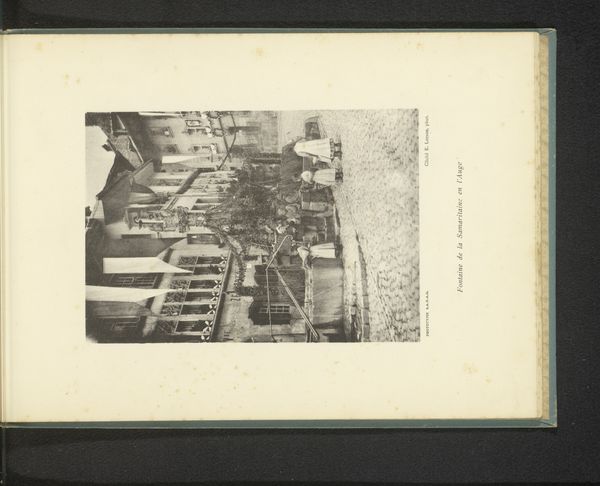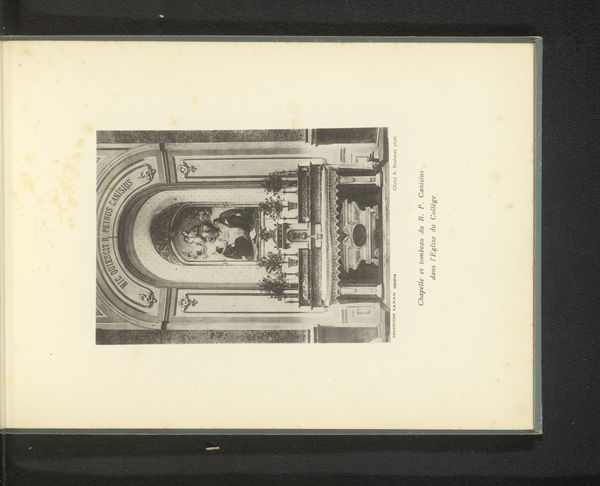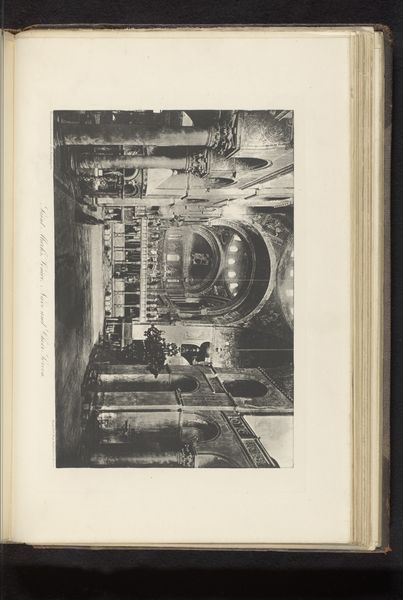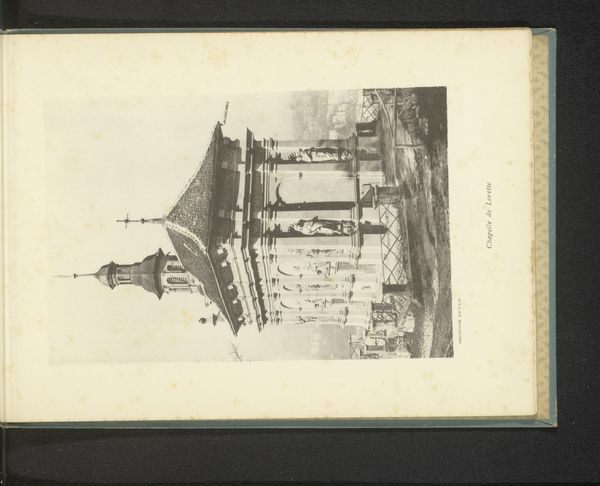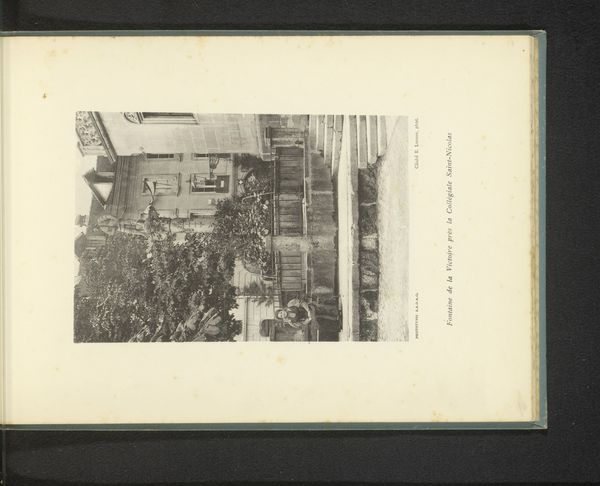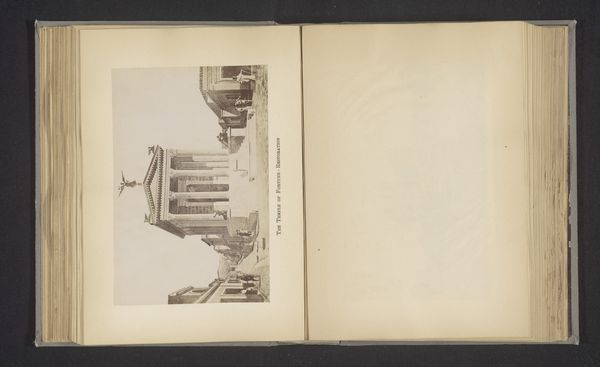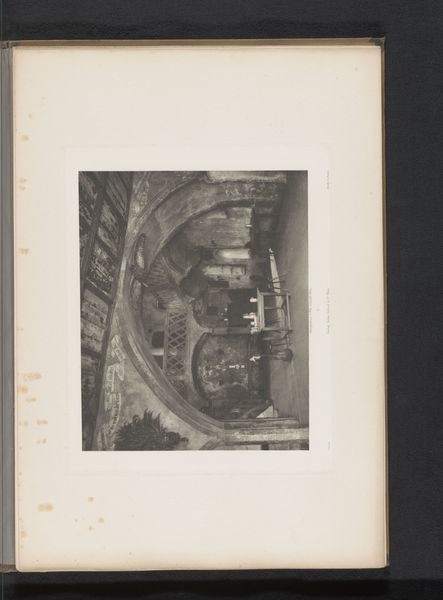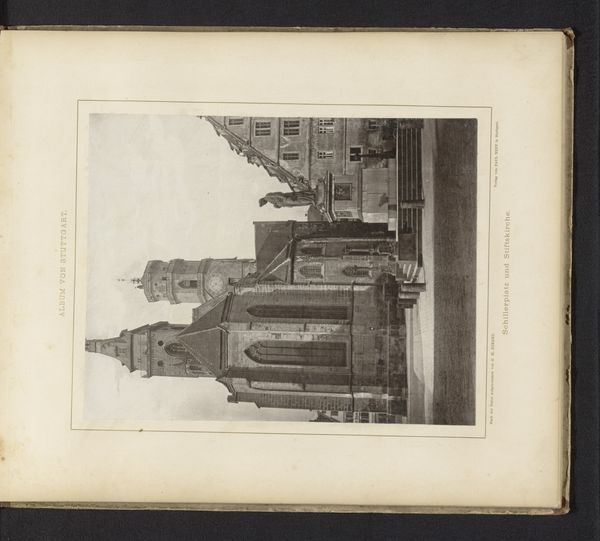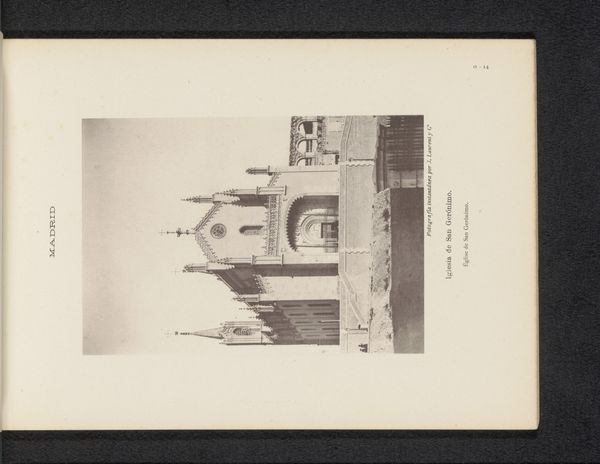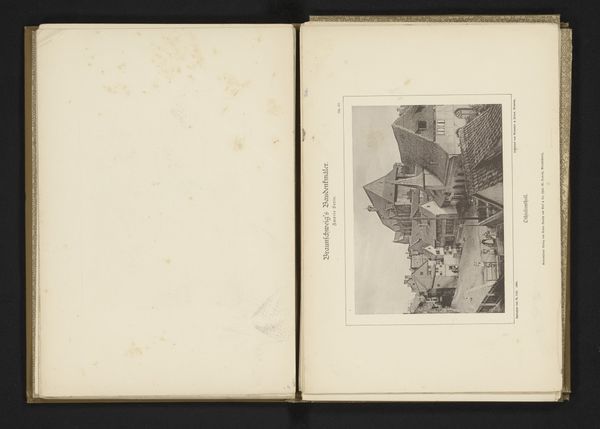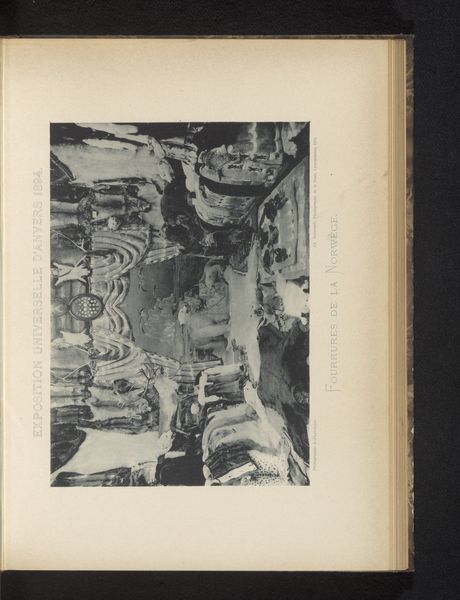
Dimensions: height 162 mm, width 113 mm
Copyright: Rijks Museum: Open Domain
Curator: This is Ernest Lorson’s “Interior of the Church of the Collège Saint-Michel in Fribourg,” dating back to 1897. The etching offers a meticulously detailed view. Editor: It's almost overwhelming! The level of detail creates a very graphic sense of weight—like those ornate architectural elements are pressing down on you. The deep perspective pulls the eye forcefully into the space, which seems both vast and somehow constricted by the density of the drawing itself. Curator: The artist uses an interesting play of geometric forms. Observe the way Lorson juxtaposes the intricate curvilinear designs of the ceiling with the linear perspective of the pews. There’s a distinct tension between the organic and the structured. Editor: Absolutely, and consider the materiality. The choice of etching allowed Lorson to reproduce a complex image quickly. Etchings were very affordable. Who was his audience? A mass produced, graphic reproduction, perhaps allowed for more widespread appreciation and study of architecture among the lower classes and middle classes, where it otherwise may have been reserved for the upper crust through the patronage of painting. Curator: You make a salient point. From a purely formal perspective, I'm struck by how Lorson controls light and shadow. The contrast accentuates the architectural features, guiding the viewer's gaze. He creates depth using hatching and cross-hatching, a remarkable technical feat. Editor: That hatching is incredibly labor intensive though, isn't it? Each line painstakingly etched onto the plate, each print pulled—think about the physical effort behind the illusion of effortless grandeur, this really demonstrates how this meticulous craft shaped our perception of religious and civic spaces during the time period. And is he perhaps critiquing the Church for this labor that allowed them to produce such a beautiful, opulent structure? Curator: An interesting thought. The technique, however, elevates a simple church interior to an almost sublime spectacle. We cannot overlook how Lorson's compositional choices contribute to the spiritual and emotional impact. The architecture is visually appealing to religious patronage and to others who see geometric visual language through mathematical structures as an intellectual expression of spirituality. Editor: Perhaps the spiritual resides as much in the hands that crafted the plates, as in the vaults Lorson sought to capture. Thanks for that view, now I will look differently. Curator: And now, I will too, appreciate that Lorson wasn't afraid to leverage such craftsmanship, perhaps pointing a direction towards the role of architectural draftsmanship in our cultural heritage.
Comments
No comments
Be the first to comment and join the conversation on the ultimate creative platform.


